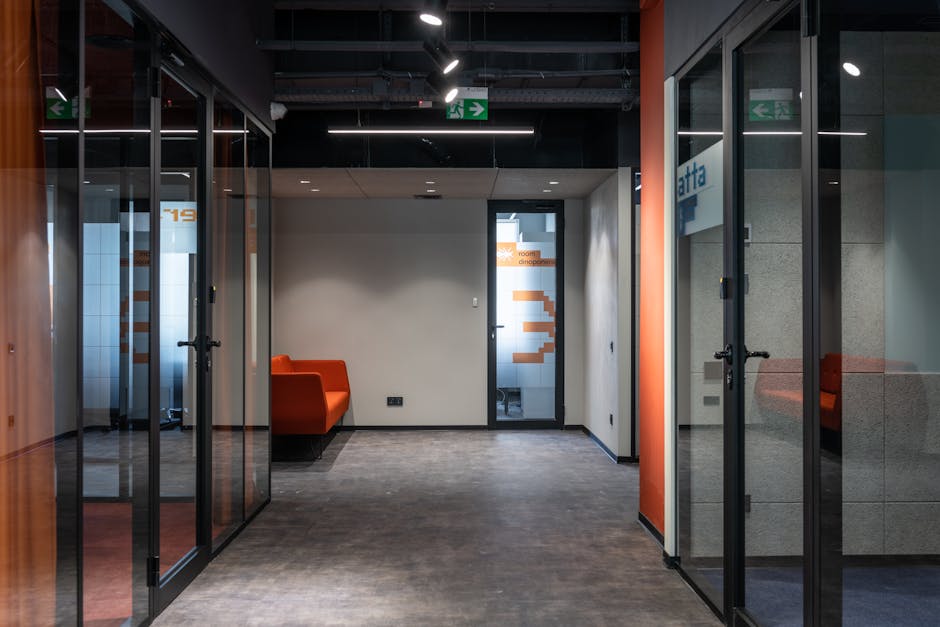Wayfinding Signage: Everything You Need to Know
“Wayfinding signage is a crucial aspect of any well-designed space, helping users navigate their surroundings with ease. This comprehensive guide explores the key components of effective wayfinding signage, from design principles to digital solutions, ensuring a seamless user experience in your workplace, school, or facility. ”

Navigating a new space can be daunting, whether it's a sprawling corporate campus, a bustling school, or a multi-level facility. This is where wayfinding signage comes into play, serving as a guiding light for users to find their way with ease. In this comprehensive guide, we'll delve into the world of wayfinding signage, exploring its essential elements and how it can enhance the user experience in your space.

What is Wayfinding Signage?
Wayfinding signage is a system of signs, maps, and other visual cues that help users navigate a space and reach their desired destination. It encompasses a wide range of elements, from directional signs and room numbers to interactive digital displays and lighting. The primary goal of wayfinding signage is to provide clear, concise, and easily understandable information to users, reducing confusion and frustration.
The Importance of Effective Wayfinding
Effective wayfinding signage is crucial for several reasons:
-
Enhancing User Experience: Clear and intuitive signage helps users feel more comfortable and confident in their surroundings, leading to a more positive overall experience.
-
Improving Efficiency: Well-designed wayfinding reduces the time users spend searching for their destination, allowing them to focus on their primary tasks.
-
Ensuring Safety: In emergency situations, clear wayfinding can help users quickly locate exits and navigate to safety.
-
Reinforcing Branding: Consistent and visually appealing signage can reinforce your organization's branding and create a cohesive aesthetic throughout the space.
Key Components of Wayfinding Signage
To create an effective wayfinding system, consider incorporating the following elements:
1. Directional Signs
Directional signs are the backbone of any wayfinding system, guiding users to their desired location. These signs should be clear, concise, and strategically placed at decision points, such as intersections or entrances.

2. Room Numbers and Names
Clearly labeled room numbers and names help users identify their destination and navigate the space more efficiently. Ensure that these signs are easily visible and follow a consistent naming convention.
3. Maps and Directories
Maps and directories provide an overview of the space, helping users orient themselves and plan their route. Consider placing these at key entry points and high-traffic areas.
4. Digital Wayfinding Solutions
Digital wayfinding solutions, such as interactive touchscreens and mobile apps, offer a dynamic and engaging way for users to navigate the space. These tools can provide real-time updates, personalized directions, and additional information about the facility.

5. Accessibility Considerations
Ensure that your wayfinding signage is accessible to all users, including those with visual, auditory, or mobility impairments. This may involve incorporating tactile signs, braille, and audio cues.
Designing Effective Wayfinding Signage
When designing your wayfinding signage, keep the following principles in mind:
-
Consistency: Maintain a consistent design language throughout your signage, including colors, fonts, and iconography. This helps create a cohesive and easily recognizable system.
-
Legibility: Use clear, easy-to-read fonts and high-contrast colors to ensure that your signs are legible from a distance and in various lighting conditions.
-
Simplicity: Keep your messaging concise and to the point, avoiding unnecessary jargon or complex instructions.
-
Hierarchy: Establish a clear hierarchy of information, with the most important elements (such as directional cues) given prominence.

Implementing Wayfinding Signage in Your Space
When implementing wayfinding signage in your workplace, school, or facility, consider the following steps:
-
Conduct a Space Audit: Analyze your space to identify key decision points, high-traffic areas, and potential confusion points.
-
Develop a Wayfinding Strategy: Based on your audit, create a comprehensive wayfinding strategy that addresses the needs of your users and aligns with your organization's goals.
-
Design and Fabricate Signs: Work with a professional signage company to design and fabricate your signs, ensuring they meet your specifications and branding guidelines.
-
Install and Maintain Signs: Properly install your signs and establish a maintenance plan to ensure they remain in good condition and up-to-date.
The Future of Wayfinding Signage
As technology advances, so do the possibilities for wayfinding signage. Some emerging trends include:
-
Augmented Reality (AR): AR-enabled signage can provide users with interactive, real-time information and directions.
-
Personalization: With the help of mobile apps and beacon technology, wayfinding systems can offer personalized directions and experiences based on a user's preferences and needs.
-
Integration with Smart Building Systems: Wayfinding signage can be integrated with smart building systems, such as occupancy sensors and facility management software, to provide real-time updates and optimize space utilization.
$$$[image(person using augmented reality wayfinding on their smartphone)]$$$
Conclusion
Wayfinding signage is an essential component of any well-designed space, enhancing the user experience, improving efficiency, and ensuring safety. By incorporating the key elements of effective wayfinding, such as directional signs, room numbers, maps, and digital solutions, you can create a seamless navigation experience for your users. As technology continues to evolve, the possibilities for innovative and engaging wayfinding solutions are endless, making it an exciting time to explore this crucial aspect of workplace design.